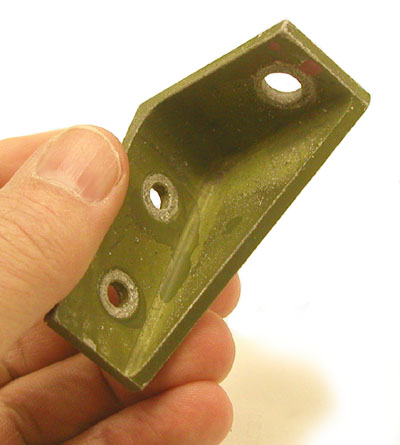Magnesium-Thorium Alloy (ca. 1980s)

Mag-Thor is a common name for magnesium alloys containing thorium. There are three typical compositions for such alloys:
- magnesium-thorium-zirconium
- magnesium-thorium-zinc-zirconium
- magnesium-silver-thorium-rare earth metal-zirconium
Notable properties of magnesium-thorium alloys include high strength, creep resistance at high temperatures, and light weight.
For example, the alloy designated HK31A, typically formed into sheets or plates, contains 3% thorium and 0.7% zirconium. The “H” in the designation refers to the presence of thorium and the “K” refers to the presence of zirconium. It is described as having good castability, being pressure tight, and possessing creep resistance up to 350 degrees centigrade (a reasonably high value).
Mag-thor has had a variety of applications (e.g., in missiles, spacecraft, tanks), but its primary use is in the manufacture of aircraft parts, especially engines. According to NUREG-1717, the average concentration of thorium in these alloys was about 1.7%.
There is a general trend away from the use of this material. Its radioactive content can be high enough that special procedures are required when handling it and disposal can be expensive. From 1973 to 1983, approximately 4000 to 5000 kg of thorium oxide was used per year in alloys for the aerospace industry. In 1991, only 500 kg per year was being used in all metallurgical applications, not just the aerospace industry, and by 1993 that number had dropped down to 100 kg per year. At the time that NUREG-1717 was written (2001), there were only two U.S. manufacturers of magnesium thorium alloys (Wellman Dynamics Corp. and Hitchcock Industries) and they had indicated that they might be ceasing production.
Dose Estimates
Routine Use
NUREG-1717 estimated a potential exposure of 50 mrem per year to an aircraft engine maintenance worker. The assumption was that the thorium content of the parts was 1.7%, that the thorium was ten years old, that there was a single large (75 kg) casting and ten smaller castings (1.6 kg each), that the worker was an average of 0.5 meters away from these parts, and that this exposure was for 40 hours per year with an additional exposure of 1000 hours per year to the ten small castings only.
Distribution and Transport
NUREG-1717 calculated a potential dose of 4 mrem per year to the driver of a truck transporting parts made of a magnesium-thorium alloy. The exposure rate at the driver’s location was estimated to be 0.04 mrem per hour.
The assumptions behind the calculations were that the parts contained 1.7% thorium, that each shipment consisted of 100 cartons with two 1.6 kg castings each, that the first row of cartons was 2 meters away from the driver, and that the exposure was for 100 hours per year.
Pertinent Regulations
10 CFR 40.13 Unimportant quantities of source material (2003)
(c) Any person is exempt from the regulation in this part and from the requirements for a license set forth in section 62 of the Act to the extent that such person receives, possesses, uses, or transfers:...
(4) Any finished product or part fabricated of, or containing tungsten or magnesium-thorium alloys, provided that the thorium content of the alloy does not exceed 4 percent by weight and that the exemption contained in this subparagraph shall not be deemed to authorize the chemical, physical or metallurgical treatment or processing of any such product or part;
